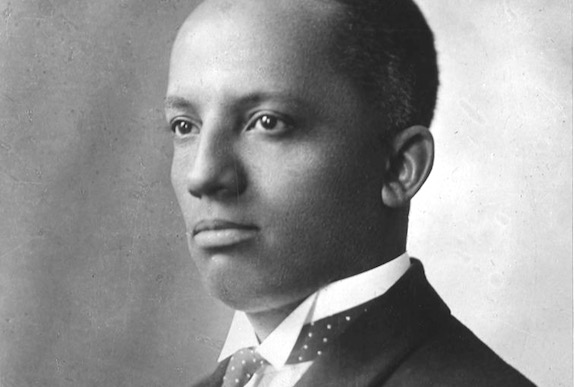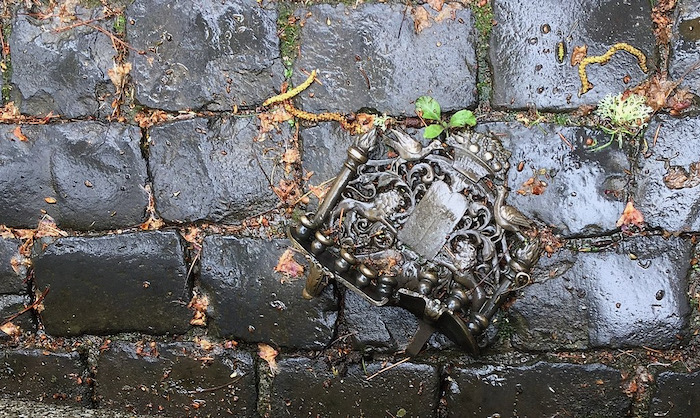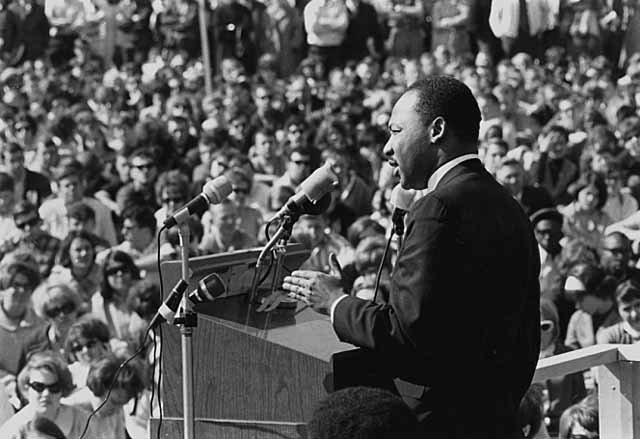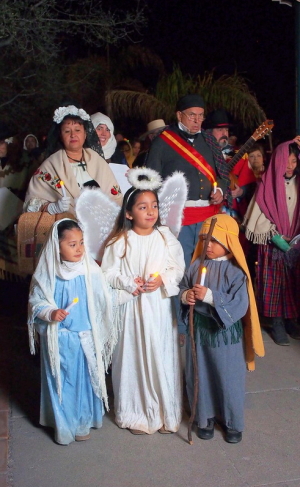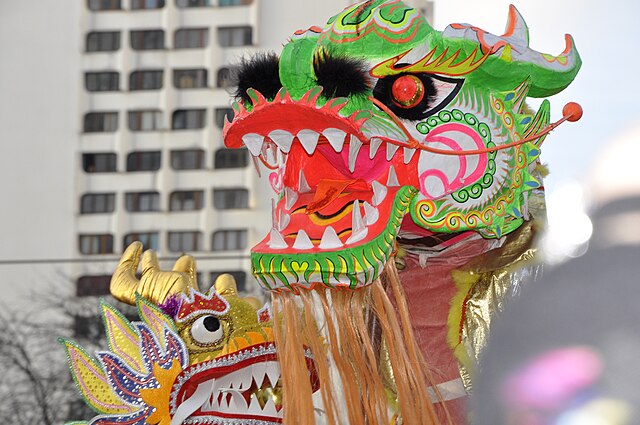
Photo courtesy of Maya-Anaïs Yataghène via Wikimedia Commons.
SATURDAY, FEBRUARY 10: The Chinese Year of the Dragon starts today—more specifically, the wood dragon—with a 15-day celebration that circles the globe. According to the South China Morning Post, “The element associated with the 2024 Dragon is strong yang wood. In the five elemental cycle, wood fuels the element of fire, and thus the quality of the Dragon is enhanced.”
Did you know? The last Chinese Wood Dragon year occurred 60 years ago, in 1964.
The color red, which is considered auspicious and homophonous with the Chinese word for “prosperous,” dominates décor in nearly every event. The Spring Festival, as it is also termed, ushers in warmer weather and marks the time of great gatherings among family and friends. When the New Year approaches, it is customarily ushered in with a Reunion Dinner that is replete with symbolic foods. For two weeks, visits are made and hosted with family and friends, gifts are exchanged and merriment is par for the course. Alternatively, this joyous occasion is called the Spring Festival.
Care to see more? The UK’s Evening Standard has photos of a portion of the billions of travelers undergoing the trip to or across China, which currently makes up the world’s largest human migration.
EARTHLY BRANCHES & THE ZODIAC
Legend has it that when the Buddha (or the Jade Emperor) invited animals to a New Year’s celebration, only 12 showed up; these 12 animals were each rewarded with a year. Earthly Branches were the original terms used for the years, but animals were later added as mnemonics and categorized as either yin or yang. Ten Celestial Stems pair with the Earthly Branches for a 60-year calendrical cycle.
Tradition has it that a person’s birth year indicates that he or she will possess the characteristics of the animal in reign during that year. (Just be careful! The year of someone’s Zodiac animal isn’t exactly considered lucky, and wearing red every day for that year is considered a means of protection from evil spirits and bad fortune.)
A 15-DAY FESTIVAL:
DINNERS, RED ENVELOPES & LANTERNS
Unrivaled among Chinese holidays, the New Year begins weeks in advance with families cleaning and hanging paper cutouts in their homes, shopping for fish, meats and other specialty foods, and purchasing new clothing. Businesses pay off debts, gifts are distributed to business associates and everything is completed according to symbolism—for good luck, prosperity and health in the coming year. In Buddhist and Taoist households, home altars and statues are cleaned.
On the eve of the New Year, a Reunion Dinner is shared with extended family members. Dumplings, meat dishes, fish and an assortment of hot and cold dishes are considered essential for the table. Traditionally, red envelopes filled with money or chocolate coins are given to children. Following dinner, some families visit a local temple.
For the next two weeks, feasts will be shared with family and friends, fireworks will fill the skies and parades with dragons and costumes will fill the streets. Friends and relatives frequently bring a Tray of Togetherness to the households they visit, as a token of thanks to the host. Through the New Year festivities, elders are honored and deities are paid homage, with all festivities being wrapped up with the Lantern Festival.
HOMEMADE CHINESE DINNER
If carryout isn’t your idea of an authentic Chinese experience, check out these sites for delicious New Year recipes:
- Cook up an assortment of mouth-watering dishes with recipes courtesy of Food Network.
- For a UK take on Chinese fare, visit the BBC for New Year’s recipes.
- Try 10 favorite Chinese recipes for dinner, at Food & Wine.
- For Chinese-food recipes with reviews to boot, check out AllRecipes.

